Whalebone Fishing Lines & Hooks Item Number: E2197-0 from the National Museum of Natural History
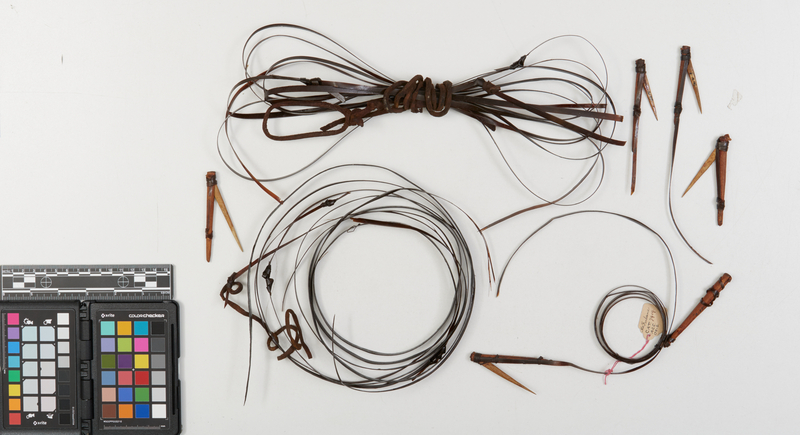
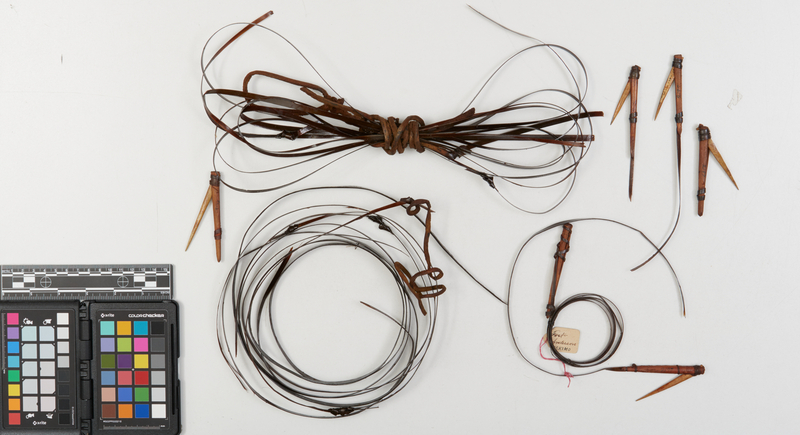
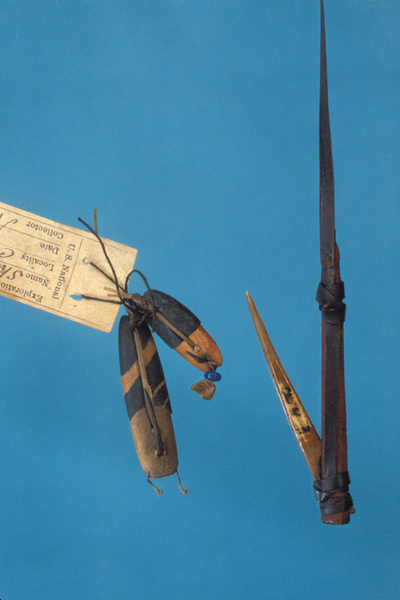
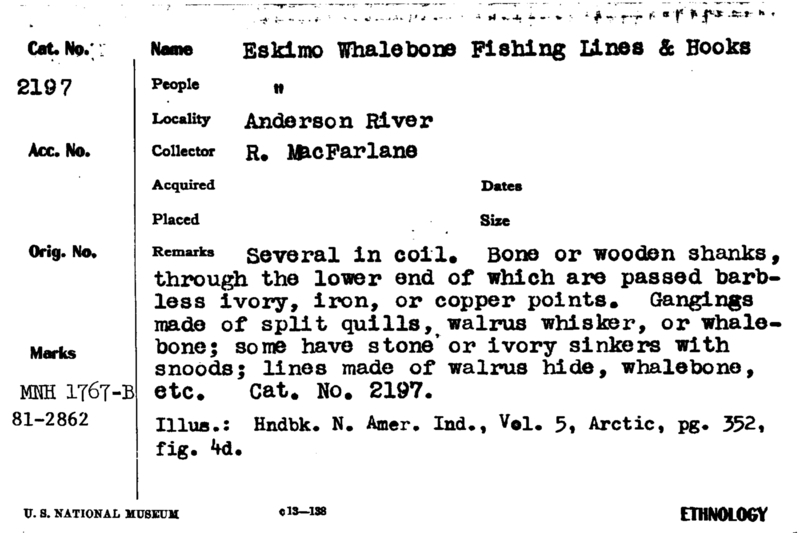

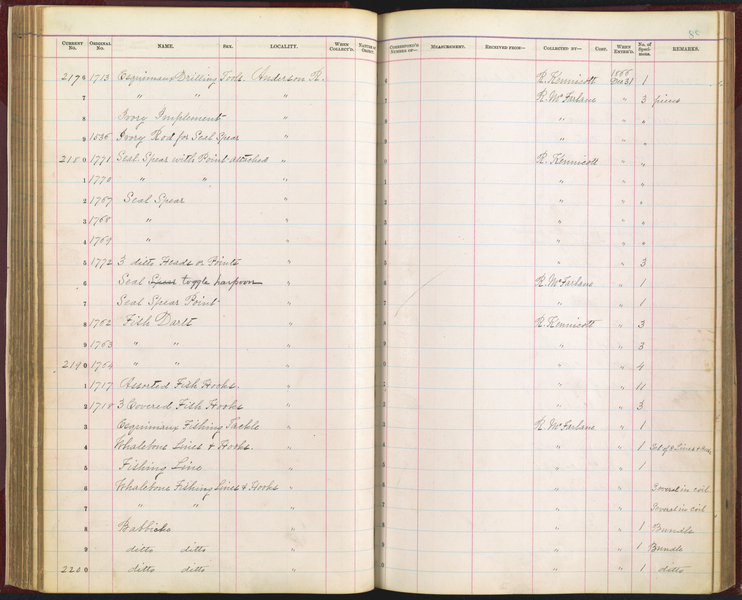
Notes
FROM CARD: "SEVERAL IN COIL. BONE OR WOODEN SHANKS, THROUGH THE LOWER END OF WHICH ARE PASSED BARBLESS IVORY, IRON, OR COPPER POINTS. GANGINGS MADE OF SPLIT QUILLS, WALRUS WHISKER, OR WHALEBONE; SOME HAVE STONE OR IVORY SINKERS WITH SNOODS; LINES MADE OF WALRUS HIDE, WHALEBONE, ETC. CAT. NO. 2197. ILLUS.: HNDBK. N. AMER. IND., VOL. 5, ARCTIC, PG. 352, FIG. 4D."SI Archives Distribution lists for 1867 list this number as being exchanged, but does not list where the item(s) went. It is described as a a "whalebone line, hook"Source of the information below: Inuvialuit Pitqusiit Inuuniarutait: Inuvialuit Living History, The MacFarlane Collection website, by the Inuvialuit Cultural Resource Centre (ICRC), Inuvik, N.W.T., Canada (website credits here http://www.inuvialuitlivinghistory.ca/posts/12 ), entry on this artifact http://www.inuvialuitlivinghistory.ca/items/240 , retrieved 12-31-2019: Six fish hooks and two bundles of fishing line made from strips of baleen. The shanks of the fish hooks are made from small pieces of wood that have been split at one end for inserting a barb. The barbs are made of bone. They are sharpened to a point at one end, and the end that is inserted into the split end of the shank is notched on one edge. The baleen line extends along the length of the fish hook, and is wrapped around the split end of the shank and the protruding notched end of the barb.
Item History
- Made in Northwest Territories, Canada
- Collected in Northwest Territories, Canada
- Received from Roderick R. MacFarlane on December 21, 1866
What
Who
- Culture
- Eskimo, Inuit and Inuvialuk
- Received from
- Roderick R. MacFarlane
Where
- Holding Institution
- National Museum of Natural History
- Made in
- Northwest Territories, Canada
- Collected in
- Northwest Territories, Canada
When
- Acquisition Date
- on December 21, 1866
Other
- Accession Number
- 66A00090